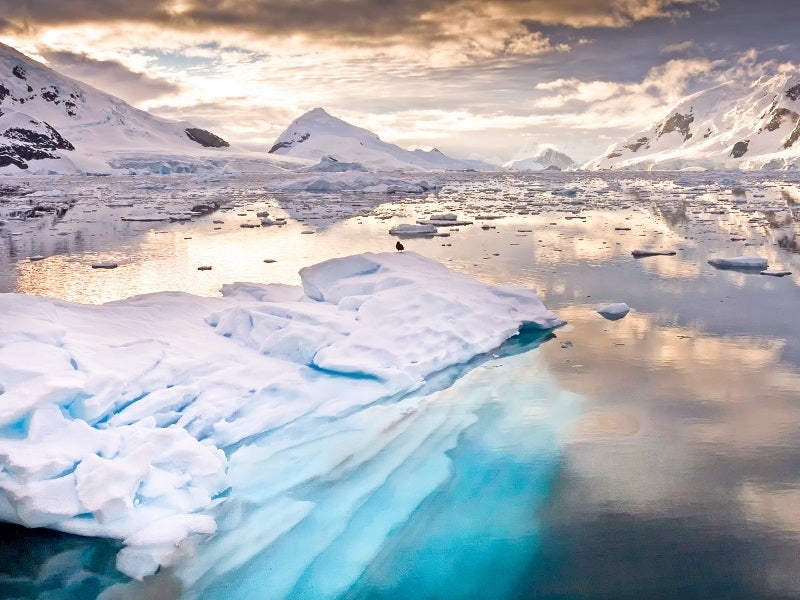
In her 2017 book “China as a Polar Great Power”, professor Anne-Marie Brady – a renowned expert on China’s exploits in the ice – highlights just how important a region Antarctica is for Beijing.
At first blush, this may be something of a revelation. Unlike, say, Africa, where China’s growing influence is clearer to see by the day, President Xi Jinping’s polar ambitions have remained largely under wraps.
But as pointed out by Brady, who lectures at New Zealand’s University of Canterbury, China most certainly has hopes to exploit the South Pole’s rich reserves of energy and minerals, while also tapping into its fishing and shipping potential. Antarctica also represents a key domain in the areas of security and climate change research.
These were all factors contributing to the announcement in November that China is planning to build its first airport on the world’s southernmost continent. According to Keji Daily, a newspaper operated by the country’s ministry of science and technology, the airport will “provide China’s airspace management in Antarctica”, while offering logistical support to future scientific expeditions in the region.
The move will see China join the likes of US, UK, Russia and Australia – as well as other signatories of the Antarctic Treaty, created in 1959 to regulate international relations in the region – in having its very own landing strip in the territory.
China has been signed up to the treaty since 1983, and in that time has constructed several research stations. Until now, however, it has been reliant on either Russian landing strips or sending out its researchers via sea – an arduous journey at the best of times.
Building an airport in the extremities
Details remain scant on the precise location of the airport, but one can be sure that its construction will need to take into consideration a multitude of factors, not least Antarctica’s extreme conditions.
Given that the region is effectively a constantly moving platform of ice – caused by continental drift – builders will be required to hunt out a location where the speed of this movement is at its slowest and, ideally, in a fixed direction.
Most of us have had a flight delayed at some point due to icy conditions or snow on the runway. This begs the question: how do you shape a safe and effective runway in the coldest continent on earth?
The answer lies in what is known as “white ice” – comprised of three or four inches of compacted snow, created by effectively rolling the snow as one would with tarmac when building a new road. This should create a landing strip with enough traction to service a small polar aircraft. Such aircraft have built-in features to handle the wintery conditions, including ski-equipped landing gear and jet-assisted take-offs.
Other difficulties remain, however, says Stewart Schreckengast, a professor of aviation technology at Purdue University.
“There are seasonable limitations due to ice runways and thermal challenges,” he says. “Due to the low temperatures, normal lubrication is also ineffective, and motors and engines have to be warmed before starting.”
Environmental obligations in an endangered region
Given the precarious state much of Antarctica today finds itself in (according to recent reports, the melting of its ice sheets has accelerated by 280% in the last four decades) the construction of any new infrastructure on the continent needs to factor in environmental impact.
In 1998, the Antarctic Treaty introduced a new protocol on environmental protection of the region and its associated ecosystems. However, “this hasn’t always been complied with”, claims Schreckengast.
“These treaties state that all human waste and construction material has to be removed when you leave the site, while nothing can be pumped underground,” he says. “The site needs to be returned to its natural condition when the activity is completed, as opposed to creating a hazardous waste dump which contaminates the environment.
“Unfortunately, I’d say the current treaties and protocols are not good enough. This means a large project, such as an airport, poses real difficulties – especially if the airport does not have access to a sea port or the ability to remove rubbish and waste.”
In recent years, tourism in the region has steadily increased, with several cruise operators now offering tours around its peninsula. However, Schreckengast draws the line at commercial flights being an option in the future.
“While environmental research facilities in Antarctica are very valuable, development of a tourist industry and the need for a commercial airport would be economically unsustainable,” he says. “Thus, governmental subsidies would be necessary even without competition.”
Tip of the iceberg
As aforementioned, China isn’t the only nation looking to stake its claim in Antarctica. In May last year, Australia also announced its plans to build a new paved runway near its Davis Research Station. Indeed, Australia claims sovereignty over the Australian Antarctic Territory.
Unlike Australia – one of the original signatories of the Antarctic Treaty – China is still a relatively new player in the region. In January 2018, a government white paper surfaced detailing plans to build a “polar silk road”, leaving in no doubt Beijing’s grand ambitions to extend its global power into the South Pole.
A new airport could play an enormous role in making this a reality. One suspects more will follow.



